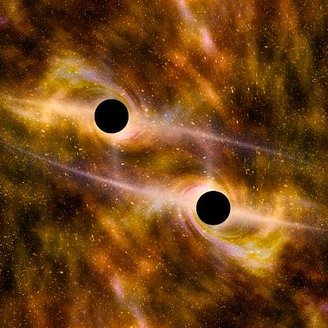A pair of objects classified as the brightest objects in the universe were discovered by chance during analysis of multispectral image data from the strategic Hyper Suprime-Cam (HSC) program at the Subaru Observatory in Hawaii. These are two quasars, black holes in the cores of galaxies that merged 900 million years after the Big Bang..
This is the first time The image of two quasars of this size was captured during their massive gravitational entanglement during the so-called cosmic dawn..
During this period, spanning the first billion years of the universe, the Epoch of Reionization occurred, when ultraviolet radiation from the first stars removed electrons from the neutral hydrogen that filled the cosmos, making it translucent. This was a critical process for the Universe, as it allowed the formation of stars, galaxies, and other cosmic structures.
What role do quasars play in the cosmic dawn?
This important cosmological transition period, which occurred 400 million years after the Big Bang, is being studied by researchers through the study of existing quasars. “The statistical properties of quasars in the Reionization Epoch tell us a lot,” explains Yoshiki Matsuoka, first author of the paper describing the current research, in a statement.
Astronomer at Ehime University in Japan He explains that approximately 300 quasars have been mapped during the Reionization Epoch, but finding them merging is an unprecedented discovery. While working with HSC images from the Subaru Telescope, “I noticed two similar, extremely red sources side by side.”
The team was initially unsure if this was a double quasar; because these distant candidates are often affected by other light sources, such as foreground stars and galaxies, in addition to the effects of gravitational lensing. The discovery was confirmed only using the Faint Object Camera and Spectrograph (FOCA).
Implications for the merger of distant galaxy nuclei

Exploring the cosmic dawn with cameras and spectrographs showed researchers that “quasars are too faint to be detected in the near infrared even with one of the largest telescopes on the ground.”
Despite the current noise astronomers have discovered that two black holes may each have a mass of 100 million times the mass of our Sun. The existence of a gas “bridge” between two galactic nuclei suggests that both are undergoing a large-scale merger with their galaxies.
Studying these objects allows us to observe the most distant past of the Universe, in addition to obtaining valuable information about the reionization process itself. “The existence of quasars in the process of merging during the Reionization Epoch was predicted a long time ago. Now it has been confirmed for the first time,” celebrates Matsuoka.
Did you like the content? Tell us on our social networks and get the opportunity to share the article with your friends who want to be informed about the latest discoveries in astronomy. To the next one!
Source: Tec Mundo
I’m Blaine Morgan, an experienced journalist and writer with over 8 years of experience in the tech industry. My expertise lies in writing about technology news and trends, covering everything from cutting-edge gadgets to emerging software developments. I’ve written for several leading publications including Gadget Onus where I am an author.













